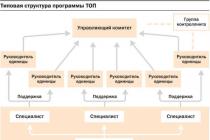Before concluding a foreign trade agreement, find out the legal status, financial position and business reputation of the counterparty. Make sure that the lawyers drafting the contract have a good command of the language of your partner's country. Gain a clear understanding of the meaning of terms used in international business.
Nikolay Chudakov,
Director, Editor-in-Chief, legal reference system "System Lawyer"
In this article you will read:
- Important nuances of concluding a foreign trade contract
- Errors in the foreign trade supply agreement
- Sample foreign trade agreement
Error 1. Concluded a foreign trade contract without checking the foreign counterparty
The legal status of a foreign person is confirmed by an extract from the trade register of the country of origin or another document issued in accordance with the legislation of the country of its location (clause 3 of the letter of the Presidium of the Supreme Arbitration Court of the Russian Federation dated December 25, 1996 No. 10).
Check your partners urgently!
Do you know that When checking, tax authorities can cling to any suspicious fact about the counterparty? Therefore, it is very important to check those with whom you work. Today, you can receive free information about your partner’s past inspections, and most importantly, receive a list of identified violations!
Consequences. If it turns out that the foreign counterparty is not registered as a legal entity or the agreement was signed on its behalf by an employee who does not have the authority to do so, then you should expect problems with the execution of the agreement. There is a high risk that the delivery of goods will not take place or will not be delivered on time. An unreliable supplier may deliver goods incompletely or with defects. But you will not be able to make a claim in connection with this (and return the prepayment). It will not be possible to find a foreign partner to serve on him, for example, a claim or lawsuit and summons to appear in an arbitration court.
How to do it right. You can assess the reliability of a foreign counterparty (in particular, check whether the company is really founded and registered in its country) by contacting, for example, chambers of commerce and industry or credit bureaus of the countries of the intended partners.
Most information about foreign companies, including financial ones, is not a commercial secret, so information about them can also be obtained from open sources - address (Jaeger Waldmann International Telex Teletex Directory, Teleurope, Marconis International Register, "Address-Europe") or proprietary reference books (Moodys Industrial Manual, Stock Exchange Official Yearbook), annual reports, prospectuses.
Error 2. Did not check the text of the contract in a foreign language
As a rule, a foreign trade contract is drawn up in two copies and in two languages. Therefore, there is a risk that discrepancies may arise between these texts due to incorrect translation or unclear understanding of the meaning of terms used in foreign trade.
Consequences. If there are discrepancies, the court will decide which text of the contract - in Russian or a foreign language - to apply. And it may turn out that it will be a text in a foreign language. Let me give you an example. A US company rented an office from a Russian landlord. The text of the agreement in Russian contained the wording “All disputes arising between the parties in relation to or in connection with this Agreement are subject to final resolution in the Arbitration Court of Moscow, Russia.”
However, the tenant filed a claim not with the Moscow Arbitration Court (which is part of the system of state courts), but with the International Commercial Arbitration Court at the Chamber of Commerce and Industry of the Russian Federation (ICAC) 1 . As a result, the ICAC decided that it was competent to consider this dispute, since “in the lease agreement in English, which, according to clause 19.2, has priority over the Russian text, the arbitration clause refers not to the Moscow Arbitration Court, but on arbitration in Moscow according to the rules of the ICAC, which is what is taking place in the present proceedings” (decision of the ICAC at the RF Chamber of Commerce and Industry of December 9, 2004 No. 74 / 2004). For the negative consequences of an incorrect name of the court in a contract, see section “Mistake 4.”
How right. Make sure that the lawyers who review the foreign trade supply contract have a good command of the foreign language in which the contract is drawn up. In addition, it is advisable to include in the contract a condition that the text in Russian has priority (clause 7.5 in the sample foreign trade contract).
1 Arbitration courts (including the ICAC) are not part of the judicial system of the Russian Federation; they are an alternative way of protecting rights. The basic principle of arbitration proceedings is the voluntary compliance by the parties with the arbitration decision.
Mistake 3. Choosing an unfavorable applicable law or not agreeing on it
Applicable law is the law that is subject to application to the rights and obligations of the parties under the contract (clause 1 of Article 1210 of the Civil Code of the Russian Federation, hereinafter referred to as the Civil Code of the Russian Federation). The parties can choose it themselves. This may be the law of one of the parties to the contract or the law of a third state in which the supplier and buyer are not registered.
Consequences. If the dispute is considered under the national law of a foreign company, then the Russian side is at a disadvantage. After all, she does not know all the features of the law of another country as well as Russian law. As a result, when concluding a contract, and even more so when a dispute arises, the services of more qualified lawyers familiar with the law of the partner country will be required, and often the services of lawyers of the country whose national law is chosen as the governing law. As a result, signing the contract will cost a significantly larger amount.
If the agreement for the conclusion of a foreign trade contract does not indicate the applicable law at all, then the arbitration (regardless of which country it is located) will determine it in accordance with the conflict of laws rules that it considers applicable (Vienna Convention on International Contracts of 1980). purchase and sale of goods, Article 28 of the Law of the Russian Federation of July 7, 1993 No. 5338–1 “On International Commercial Arbitration”). Moreover, these can be norms of both international and national law. Often, conflict of laws rules of different countries indicate that the law of the seller’s country is applicable for an international sales contract. This provision is also contained in Art. 1211 of the Civil Code of the Russian Federation. Thus, if the contract for the import of goods into Russia does not stipulate the applicable law, then, as a general rule, it will be the law of the seller’s country.
How to do it right. When developing and concluding a foreign trade contract, consider two circumstances. First, ask your lawyers to make such a contract much more detailed than regular contracts with Russian companies. Try to resolve all possible controversial situations in it and fix the rules for their resolution. After all, if a controversial situation arises that is not regulated by a foreign trade contract, then the law established in accordance with the conflict of laws rule will be applied, which the arbitrators consider applicable in this case. And much will depend on the laws of which country this dispute will be considered.
- Head of sales department: how to become an excellent manager
Secondly, even in the most detailed contract, you need to indicate the applicable law - in case some situation still remains unresolved (Figure, clause 5.3 of the contract). Try to invite the counterparty to choose Russian law. If he does not agree to this, then even before signing the contract, contact specialists who have experience in working with the law of the seller’s country so that they analyze the text of the contract for possible risks associated with the peculiarities of the legislation of that country.
Additional Information. Even if the parties have agreed that Russian law is applicable, the court will only apply it to those issues that are not regulated by the Vienna Convention on Contracts for the International Sale of Goods.
Mistake 4. Agreeing on an unfavorable arbitration clause
The contract must define not only the law that will be applied in the event of a dispute, but also the court that will hear the dispute (arbitration clause). The parties may appeal to the state court of the seller's country or the buyer's country, or to one of the international arbitration courts. Thus, you must first choose between state and arbitration courts, and then identify a specific court (either a specific arbitration court, or the country whose state court will hear the dispute).
Consequences. An irrational choice of court can lead to unnecessary costs. If the dispute is to be heard in a foreign court, then, firstly, you will need a lawyer who has the right to speak in such a court and is familiar with its procedure.
Secondly, conducting a process in many foreign countries requires more time and costs than considering a case in Russian state courts.
Finally, consideration of a case in an arbitration court has its own characteristics. The process can take several months, but the decision is final and is very rarely challenged in state courts (such a review can only be applied for on procedural grounds, but not if the losing party does not agree with the decision on the merits).
How right. Firstly, you need to correctly name the court you have chosen in the contract - it is important not to make mistakes in the terms. The fact is that in Russia, state courts that consider economic disputes in the business sphere are called arbitration courts (for example, the Moscow Arbitration Court). In other states and in international law, the term “arbitration court” usually means a non-state arbitration court (see section “Error 1”).
Secondly, if you have chosen one of the international arbitration courts, ask the lawyers to check its regulations and include in the text of the contract an arbitration clause exactly in the wording given in the regulations (Figure, clause 5.2 of the contract). This will eliminate the possibility that the case will end up being considered by a court that is not desirable for you.
Error 5. The basic terms of delivery were mixed up
Often the parties to a contract are not familiar with trade practices in different countries. To make it easier for them to develop contracts, the International Chamber of Commerce has compiled a list of the most typical options for their conditions - Incoterms supply bases. In the 2010 edition, there are 11 such options. Four of them are applicable only for sea and inland waterway transport, and the remaining seven are for all types of transport.
Consequences. Incoterms are applied by agreement of the parties. But if in the contract you refer to the corresponding Incoterms basis, then in the event of a dispute the court will apply it and will not take into account your assurances of ignorance of what this basis means.
How right. Carefully read (preferably with a lawyer) the description of all Incoterms terms and explanations to them. Calculate in advance which conditions will be more profitable for you as a buyer. If you have chosen, for example, the EX Works basis (ex-factory), directly indicate it in the contract, and also write the address of the place from where the buyer is obliged to pick up the goods (figure, clause 1.4).
If the parties change or supplement individual provisions of the selected terms of delivery (Incoterms), then all changed (added) conditions must be set out in detail in the contract. For example, you can specify what costs the parties bear in accordance with the selected delivery basis. Additionally, stipulate who bears the costs of loading and unloading, packaging and labeling of the goods. Clarify at what point ownership rights and the risk of accidental loss of the goods are transferred to the buyer. Then, not the Incoterms rule will be taken into account, but the special provision of the contract (ICAC decision of October 18, 1999 No. 385 / 1998).
Error 6. The edition of Incoterms was not specified
Consequences. If the contract does not indicate which edition of Incoterms you are using (or the name of the delivery basis and edition is incorrectly indicated), a controversial situation may arise.
Firstly, some of the bases were replaced. For example, in Incoterms 2000 there were bases DAF, DES, DEC, DDU. In Incoterms 2010 they are not present, instead DAT and DAP appeared. Therefore, if you write in the contract, for example, “Incoterms 2010 DAF,” then the court will have a question: what basis did the parties have in mind—whether the DAF basis from Incoterms 2000, or one of the new DAT or DAP bases in Incoterms 2010.
Secondly, when referring to a specific basis of Incoterms 2010, it is worth clarifying how it is formulated in this particular edition. The fact is that some delivery bases have changed slightly. In particular, one change was made to the FOB (free on board) basis. In the Incoterms 2000 edition, the seller's obligation to transfer the goods was considered fulfilled (and the risk of loss or damage to the goods passed to the buyer) at the moment of crossing the ship's rails, and in the 2010 edition - at the moment the goods were placed on board the ship.
How to do it right. In the contract, be sure to write down which edition of Incoterms you use. If you are referring to any of the old bases, indicate the edition in which it is used and the base itself, for example, “Incoterms 2000 DAF”. Then, in the event of a dispute, the 2000 edition will apply.
Additional Information. In the terms of the letter of credit, it is necessary to indicate what mandatory details the documents submitted to the bank must contain (name of the document; who issued or certified the document; main points in the contents of the document; language of the document - Russian, English, etc.); number of copies of originals and copies of such documents.
Error 7. The contract did not contain a complete list of documents
As a rule, sellers refuse to deliver without a guarantee, and the buyer refuses to pay for goods without actual delivery. Therefore, today most Russian companies enter into foreign trade contracts with a form of payment such as a letter of credit. It excludes non-compliance with the conditions of both the supplier and the buyer.
With the letter of credit form of payment, the bank, at the direction of the buyer, undertakes to transfer money to the seller when he presents certain documents to him. The list of such documents is agreed upon by the buyer and seller in advance. Thus, a letter of credit allows the buyer to avoid the risks associated with making an advance payment: the money will be transferred to the seller only after the actual delivery of the goods; if delivery does not take place, the money will be returned within a predetermined time frame; the delivered goods will be of appropriate quality, in the agreed volume and assortment.
- Service agreement: sample, typical mistakes
Consequences. If the contract contains an incomplete or incorrect list of documents submitted to the bank, there is a risk that the seller will receive payment even if the goods have defects. For example, if the list of documents does not include a quality certificate, the bank will not be able to request such a certificate from the seller and will transfer payment to him based on the remaining documents. You, of course, will be able to make a claim to the seller if the product is defective, but it will take more time. In addition, you will have to demand that the seller return the funds already transferred to him.
How to do it right. A foreign trade contract must contain a complete list and precise description of the documents that the seller must submit to the bank in order to receive payment. In particular, these are documents confirming the actual delivery of goods, their quality, quantity and range. Then, if the seller cannot confirm, for example, the proper quality of the goods, he will not receive payment from the bank.
Information about the author and company
Nikolay Chudakov specializes in tax and civil law. Graduated from the Faculty of Law of the State University Higher School of Economics. He worked as editor-in-chief of such professional publications as “Arbitration Practice”, “Tax Disputes: Theory and Practice”, “Documents and Comments”. Author of the books “Algorithms for winning a tax dispute: how to win against the inspectorate on procedural grounds” and “10 precedents on rental disputes.”
YSS "System Lawyer"- the first legal reference system of practical explanations from judges. Official website - www.1jur.ru
A foreign trade agreement (contract) is a civil document that defines the terms of a foreign trade transaction. In the Civil Code of the Russian Federation, Art. 420, a contract is an agreement between two or more persons to establish, change or terminate civil rights and obligations. The rules on bilateral and multilateral transactions apply to contracts. General provisions on obligations apply to obligations arising from an agreement, unless otherwise provided by the rules of Chapter 27 of the Civil Code of the Russian Federation and the rules on certain types of agreements contained in the Civil Code of the Russian Federation.
Art. 153 of the Civil Code of the Russian Federation, transactions are recognized as actions of citizens and legal entities aimed at establishing, changing or terminating civil rights and obligations.
When entering into a contractual relationship, the parties determine their rights and obligations, the totality of which constitutes the content of the agreement. By virtue of an obligation arising from a contract, one person is obliged to perform a certain action in favor of another person, and this person accordingly has the right to demand the fulfillment of obligations.
The basis of the legal regulation of contractual relations is the principle of freedom of contract. Persons are free to establish their rights and obligations on the basis of an agreement and to determine any terms of the agreement that do not contradict the law. Civil rights may be limited on the basis of federal law and only to the extent necessary in order to protect the foundations of the constitutional system, morality, health, rights and legitimate interests of other persons, ensuring the defense of the country and the security of the state.
All of the above fully applies to foreign trade agreements, with the exception of cases when the content of the relevant terms of the agreement is directly prescribed by law, other legal acts or international agreements. It should be noted that the introduction of a system of currency control over export-import transactions, as well as significant penalties for violating the terms of currency legislation, forced Russian participants in foreign trade activities to take a more careful approach to determining the terms of contracts and pay more attention to collecting information about foreign counterparties.
A foreign trade agreement is considered concluded if the parties reach an agreement on all essential terms. Essential conditions include: subject of the agreement; conditions directly named in an international treaty, law or other act as essential for a given type of agreement; the conditions under which an agreement must be reached by one of the parties.
In terms of the preparation and execution of international sales contracts, the United Nations Convention “On Contracts for International Sales” is in force, concluded in Vienna on April 11, 1980 (Vienna Convention).
When preparing a foreign economic agreement, it is necessary to take into account the peculiarities of Russian legislation in the field of civil, currency, tax, customs and other legal relations. When Russia joined the Vienna Convention in September 1991, a condition was stipulated that oral contracts would not apply in trade with Russian participants.
In accordance with Russian legislation, it is prohibited to include tax clauses in contracts, in accordance with which a foreign legal entity or individual assumes the obligation to pay taxes of other taxpayers.
The foreign trade agreement should stipulate in what language this document is drawn up, in what language correspondence on it will be conducted, etc. If there is no special instruction, then correspondence is conducted in the language of the party from whom the proposal to conclude the transaction was received.
1. Unified number
A foreign trade contract may have a unified number consisting of three groups of characters formed as follows:
BB/ХХХХХХХХ/ХХХХХ or ЦЦЦ/ХХХХХХХХ/ХХХХХ
The first group of characters - two letters or three numbers correspond to the code of the buyer's (seller's) country according to the Russian classifier of countries of the world, used for customs clearance purposes.
The second group - eight characters indicate the code of the buyer's (seller's) organization according to the All-Russian Classifier of Enterprises and Organizations (OKPO).
The third group of characters - five digits, represent the serial number of the document at the level of the buyer (seller) organization.
2. Date of conclusion of the contract
The date of conclusion of the agreement is the date of its signing by the last party. If the text of the agreement does not explicitly indicate the date of its entry into force, then such a date is considered to be the date of conclusion of the agreement.
3. Place of signing the agreement
The place where an agreement is signed is important for the legal regulation of foreign trade activities, and in certain circumstances this fact may acquire legal significance. The place where the agreement is signed determines the form of the transaction, the legal capacity and capacity of the persons who made the transaction. If the text of the agreement does not indicate the law of which country is applied when considering the dispute, then this will be determined based on the place where the agreement was signed.
4. Subject of the agreement
This section of the contract formulates the subject - an action or set of actions that determine the type and nature of the transaction being concluded.
The same paragraph indicates the object of the contract - the product, its range, size, completeness, country of origin, other data necessary to describe the product, including references to national and (or) international standards, performance of specific work or provision of services.
If goods of different qualities or assortment are supplied, they are listed in the specification attached to the contract and which is an integral part of it.
They also indicate the name of the container or packaging of the goods according to the international classifier, description and requirements for cargo labeling.
When determining the quantity of goods, the contract specifies the unit of measurement and the procedure for establishing the quantity (a firmly fixed figure or within established limits).
The issue of including containers and packaging in the quantity of goods supplied is also discussed; in accordance with this, gross and net weights are determined.
When determining the quality of a product, the contract establishes a set of properties that determine the suitability of the product for its intended use. The quality of a product can be determined by a standard; technical specifications containing detailed technical characteristics of the product, a description of the materials from which it is made, rules and methods of inspection and testing; according to specification; according to the model; according to preliminary inspection; content of individual substances, etc. Usually the product is accompanied by a quality certificate issued by the manufacturer, a certificate of origin.
5. Terms of delivery
This section fixes the basic delivery conditions, determines the delivery date and timing, the batch delivery schedule, and the procedure for delivery and acceptance of goods in terms of quantity and quality.
Basic terms of delivery - conditions that determine the responsibilities of the seller and buyer for the delivery of goods, the moment the risk of accidental loss or damage to the goods transfers from the seller to the buyer.
The distribution of risks, costs and responsibilities between the seller and the buyer is based on the international trade conditions "Incoterms" (Incoterms, International Commercial Terms), developed by the International Chamber of Commerce (ICC), used in international trade practice. The first edition of Incoterms was published in 1936, the latest was published in 2000 and was called Incoterms 2000.
The use of INCOTERMS when concluding foreign trade contracts is characterized by the following features:
from a legal point of view, this document is advisory in nature, therefore the parties to the contract using its terms must make a reference to this document;
the unified delivery conditions contained in INCOTERMS are of a general nature, therefore, in the relevant articles of the contract, the parties must clarify the obligations of the seller and buyer for the delivery of goods;
in contracts, the parties can agree on the use of INCOTERMS earlier versions than the latest edition of 2000 (1936, 1953, 1967, 1976, 1980, 1990), which is stipulated in the contract;
Due to the widespread use of INCOTERMS in the world, when preparing customs documents, the condition in accordance with INCOTERMS is indicated in the column “Delivery conditions”.
Based on the terms of INCOTERMS, the distribution of costs for the delivery of goods between the seller and the buyer is fixed. These costs can amount to up to 50% of the product price. Delivery costs include: preparation for shipment, loading into a vehicle, transportation, transshipment, cargo insurance during transportation, storage of goods in transit, customs duties, etc. In addition, INCOTERMS determine the moment of transfer from the seller to the buyer of the risks of accidental loss and damage goods.
In total, INCOTERMS contains 13 types of basic terms of delivery, which provide for various combinations of costs and risks of the seller and buyer, and are also classified depending on the methods of transportation. Let's briefly consider these conditions.
The first group is E terms (E-terms) - the seller provides the goods to the buyer directly on his premises:
EXW - ExWorks (named point) - Ex-factory (name of place).
In accordance with this condition, the seller is obliged to make goods that meet the requirements of the contract available to the buyer at his factory or warehouse within the time period stipulated by the contract. The buyer bears all costs and risks (including loading at the factory) of transporting the goods from the seller's factory or warehouse to the destination, as well as for customs clearance of the goods for export.
The second group - conditions F (F-terms) - the seller undertakes to place the goods at the disposal of the carrier, which is provided by the buyer:
FCA – Free Carrier (named place) – Free carrier (name of place).
The term “carrier” means any company with which an agreement has been concluded for the transportation of goods by rail, road, sea, etc., including intermodal transport.
The seller's obligations under this condition are to deliver the customs-cleared goods to the specified location to the carrier (or the buyer's forwarding agent). The risk of loss or damage to the goods passes from the seller to the buyer upon transfer of the goods to the carrier (forwarder).
FAS – Free Alongside Ship (named port of shipment) – Free along the side of the ship (name of the port of shipment).
The seller delivers when the goods are placed alongside the ship or on lighters at the named port of shipment. From this moment on, the risk of loss and damage to the goods is borne by the buyer. The seller is responsible for clearing the goods through customs for export. This condition applies when transporting by sea or inland waterway.
FOB – Free On Board (named port of shipment) – Free Board (name of the port of shipment).
The seller delivers when the goods pass the ship's rail at the named port of shipment. From this point on, the buyer bears all risks of loss and damage. The seller is responsible for clearing the goods through customs for export. Applicable only for transport by sea or inland waterway. The contract for the carriage of goods from the named port of shipment is concluded by the buyer at his own expense.
The third group - conditions C (C-terms) - the seller undertakes to enter into a contract of carriage, but without taking on the risk of accidental loss or damage to the goods or any additional costs after loading the goods:
CFR – Cost and Freight (named port of destination) – Cost and freight (name of destination port).
The seller completes delivery when the goods pass the ship's rail at the port of shipment. The seller must pay the costs and freight necessary to bring the goods to the port of destination. The costs of customs clearance of goods for export are borne by the seller. The risk of loss and damage and additional costs once the goods are shipped pass to the buyer.
CIF – Cost, Insurance and Freight (named port of destination) – Cost, insurance and freight (name of port of destination).
The seller completes delivery when the goods pass the ship's rail at the port of shipment. The seller must pay the costs and freight necessary to bring the goods to the port of destination. The risk of loss and damage and additional costs once the goods are shipped pass to the buyer. The seller is obliged to purchase marine insurance in favor of the buyer against the risk of loss and damage to the goods during transportation, i.e. the seller is obliged to conclude an insurance contract and pay insurance premiums. The costs of customs clearance of goods for export are borne by the seller.
CPT – Carriage Paid to (named point of destination) – Freight/Carriage paid to (name of destination).
The seller delivers the goods to the carrier named by him and pays the costs associated with transportation to the specified destination. The buyer assumes all risks of loss and damage to the goods, as well as other expenses after the goods are handed over to the carrier. If transportation is carried out by several carriers, then the transfer of risk will occur when the goods are transferred to the first of them. Customs clearance of goods for export is carried out by the seller. This condition is used when transporting goods by any type of transport, including multimodal transport.
CIP – Carriage and Insurance Paid to (named point of destination) – Freight/Carriage and insurance paid to (name of destination).
The seller delivers the goods to the carrier named by him and pays the costs associated with transportation to the specified destination. The buyer assumes all risks of loss and damage to the goods, as well as other expenses after the goods are handed over to the carrier. If transportation is carried out by several carriers, then the transfer of risk will occur when the goods are transferred to the first of them. Customs clearance of goods for export is carried out by the seller. The seller is obliged to provide insurance in favor of the buyer against the risk of loss and damage to the goods during transportation, i.e. the seller is obliged to conclude an insurance contract and pay insurance premiums. This condition is used when transporting goods by any type of transport, including multimodal transport.
The fourth group of conditions - conditions D (D-terms) - the seller bears all costs and assumes risks until the goods are delivered to their destination.
DAF – Delivered at Frontier (...named place) – Delivery to the border (name of the place of delivery).
The seller has delivered when the goods, unloaded and cleared for export, arrive in a vehicle at the disposal of the buyer at a named place or point at the border before the goods enter the customs border of the adjacent country (not cleared for import). Border – any border, including the border of the country of export. Therefore, the point or place is clearly indicated. The seller bears the risk until delivery. This condition applies if transportation is carried out by any type of transport to the land border.
DES – Delivered Ex Ship (...named port of destination) – Delivery from the vessel (name of the port of destination).
The seller makes delivery when the goods, not cleared for import, are made available to the buyer on board the ship at the named port of destination. The seller bears all risks until unloading. This condition applies only when transported by sea or inland water transport or in multimodal transport, when the goods arrive at the port of destination on a ship.
DEQ – Delivered Ex Quay (...named port of destination) – Delivery from the pier (name of the port of destination).
The seller has fulfilled his obligation to deliver when the goods, cleared for import, are placed at the disposal of the buyer on the quay at the named port of destination. The seller bears all costs of transporting and unloading the goods at the pier. This condition applies when transporting goods by sea or inland water transport and in multimodal transport, when the goods are unloaded from a ship to a pier at the port of destination.
DDU – Delivered Duty Unpaid (...named place of destination) – Delivery without payment of duty (name of destination).
The seller provides the goods not cleared for import and unloaded from the arriving means of transport at the named place of destination. The seller is obliged to bear all costs and risks associated with transporting the goods to this place, with the exception of costs for customs clearance, customs payments, etc. The buyer is responsible for paying such costs, as well as other costs and risks associated with this that it failed to clear customs for import in a timely manner. Risks and costs for unloading and reloading goods depend on who controls the selected delivery location. This condition may apply regardless of the type of transport.
DDP - Delivered Duty Paid (...named place of destination) - Delivery with payment of duty (name of destination).
The seller provides the goods cleared for import and unloaded from the arriving means of transport at the named place of destination. The seller is obliged to bear all costs and risks associated with transporting the goods to this place, including the costs of customs clearance, customs payments, etc. This condition can be applied regardless of the type of transport.
Delivery dates and dates, delivery schedule. The term refers to the moment when the seller is obliged to transfer the goods into the ownership of the buyer. The goods can be delivered either at once in full or in parts. The delivery period is established by defining a calendar date or period during which delivery must be made. In addition, it is indicated which date is considered the delivery date - the date of transfer of the goods to the buyer, for example: the date of the transport document (bill of lading, invoice, etc.), the date of the forwarder's receipt of acceptance of the cargo, the date of signing the acceptance certificate by the commission, etc.
The procedure for delivery and acceptance of goods. It is necessary to clearly formulate the procedure for accepting goods in terms of quantity and quality: type of delivery and acceptance, place of actual delivery and acceptance, period, method of quality control, method of accepting goods for quality, method of determining the quantity and quality of supplied goods (sampling or continuous inspection). The goods delivered are accepted at the place at which title and risk of loss or damage passes from the seller to the buyer. For example, when using the EXW condition, acceptance is carried out at the seller’s warehouse, under FOB condition - at the port of shipment.
By type, delivery and acceptance can be preliminary - it involves inspecting the goods from the seller to establish compliance of quantity and quality with the terms of the contract, establishing the correctness of packaging and labeling; final – the actual completion of the delivery at the specified location and on time is verified.
There are two main ways to determine the quantity of goods when it is expressed in weight units: by the shipped weight, established at the point of departure and indicated by the carrier in the transport document (bill of lading, air waybill, railway waybill, etc.); according to the unloaded weight established at the destination in the importer's country. Inspection is carried out by weighing at the time of unloading by persons acting under the authority granted to them by the authorities and chambers of commerce. The results are recorded in the relevant documents.
Acceptance of goods for quality is carried out on the basis of a document confirming the compliance of the quality of the delivered goods with the terms of the contract, as well as checking the quality of the actually delivered goods at the place of acceptance. The quality of the actually delivered goods is determined by analysis, comparison of previously selected samples, inspection, inspection and testing.
The contract determines who will carry out the acceptance - the parties or their representatives jointly, a disinterested monitoring organization appointed by agreement of the parties, etc.
6. Product price and total contract amount
This section indicates the unit price and the total contract amount. When setting a price, the unit of measurement, the price basis, the currency of the price, the method of fixing the price, and the procedure for determining the price level are fixed.
The price basis is determined by the basic delivery condition selected in the contract.
The price established in the contract can be determined in the currency of the country of the exporter or importer, in the currency of settlement or in another currency. The contract specifies the name and currency code of the price, in accordance with the Currency Classifier.
Depending on the method of fixing prices, there are firm, floating, and sliding prices. The fixed price is set at the moment of signing the contract and is not subject to change during its validity period. The price with subsequent fixation is not directly indicated in the contract, but the method of setting the price in the future on a certain date is precisely described, for example, the price is set according to the level of stock exchange quotations on the delivery date or payment date. In contracts for the supply of goods with a long production period (marine vessels, industrial equipment), sliding prices are used, which are calculated taking into account changes in the costs of manufacturing the goods during the contract period. In contracts for which the delivery of goods is carried out in batches, the price can be determined during the execution of the contract, for example, revised for each delivery batch.
When determining the price level, they are guided by calculated and published prices. Published prices are reported in special sources (reference prices, stock quotes, auction prices, bid prices of large suppliers, etc.). Estimated prices are used in contracts for the supply of specific goods, for example, custom-made equipment.
7. Terms of payment (terms of settlement)
The main terms of payment include: currency of payment, terms of payment, method of payment, form of payment.
In addition to the price currency, the contract specifies the payment currency, that is, the currency in which payments under the contract will be made, and indicates the name of the currency and currency code in accordance with the Currency Classifier. It is possible to pay for goods in different currencies: part in one currency, part in another.
If the payment currency does not coincide with the price currency, then the agreement specifies the procedure for converting one currency into another. Typically, recalculation is made at the exchange rate of one currency to another in force in the country of the paying party. This procedure is called a currency clause.
An important point is the establishment of payment deadlines (as well as guarantees of compliance with these deadlines). The contract defines either calendar dates or the period during which payment must be made, as well as the procedure and timing for granting deferred payment (if provided).
This section also indicates the documents transferred by the seller to the buyer, confirming the fact of shipment, cost, quality, nomenclature, quantity of goods, etc.
Particular attention should be paid to the choice of payment method and form of payment. The following payment methods are available:
cash payment, that is, the transfer of funds before or after the exporter transfers documents of title or the goods themselves to the buyer;
advance payment – payment before the goods are transferred to the buyer’s disposal or before the start of the contract (commercial loan to the seller);
deferred payment – payment after the goods are transferred to the buyer’s disposal after a certain period of time (commercial loan to the buyer).
In international trade, the following forms of payment are used: transfer, collection, letter of credit, checks.
International bank transfers are the most common form of payment. With this form of payment, the payer's bank, for a fee, on the payer's instructions, transfers the amount of funds specified in the transfer order to the recipient's (beneficiary's) bank in favor of the specified recipient (beneficiary). When making payments in the specified form, they are guided by international documents: Model Law “On International Bank Transfers”, approved by the UN Commission on International Trade Law in 1992, ICC Guidelines for the International Interbank Transfer of Funds and Compensations of 1990.
Letter of Credit. The importer's bank undertakes, at the direction of the importer and at his expense, to make a payment to the exporter in the amount of the cost of the goods delivered against the exporter's presentation of the documents specified in the letter of credit. Letters of credit can be covered or uncovered, confirmed or unconfirmed; revocable and irrevocable, divisible and indivisible; transferable (transferable), as well as renewable (revolving).
Collection. The exporter transmits an order to his bank to receive a certain amount of payment from the importer against presentation of the relevant documents, as well as bills, checks and other payable documents.
8. Force majeure
As a rule, a foreign trade agreement contains a force majeure clause, according to which the deadline for the execution of the agreement is postponed or the party is generally released from full or partial fulfillment of obligations in the event that, after the entry into force of the agreement, circumstances beyond the control of the parties arise that impede the execution of the agreement. There are also established international customs on this issue, which are published by the International Chamber of Commerce.
9. Dispute resolution procedure
This section defines the procedure for presenting and considering claims unresolved by the parties, the procedure for payments for claims, and the procedure for considering controversial issues in arbitration. It is necessary to clearly indicate in the contract the law of which country will govern these relations.
10. Sanctions (liability)
In this paragraph, the parties establish responsibility for improper fulfillment of obligations, including late payment or delivery, as well as delivery of goods of inadequate quality or quantity.
11. Procedure for changing or canceling the contract
In this section, the parties stipulate the date of entry into force of the agreement, its validity period, the procedure for introducing amendments and additions to the agreement, and other conditions.
12. Details of the parties, signatures, seals
The agreement specifies the full details of the parties: legal and postal address, bank details; positions, names and signatures of the persons who entered into the agreement: The agreement is sealed.
To conduct a foreign trade transaction in accordance with the legislation of the Russian Federation, the importer or exporter must prepare the appropriate documents, obtain the necessary permits, and fulfill the established requirements.
All goods and vehicles transported across the customs border are subject to customs clearance and customs control in the manner and under the conditions provided for by the Customs Code of the Russian Federation. Payments in foreign currency and other currency transactions under foreign trade import transactions are carried out in the manner prescribed by the currency legislation of the Russian Federation and are subject to currency control.
The basis for recording transactions under a foreign trade agreement in accounting are properly executed documents confirming the fact of transactions; such documents include commercial documents received from suppliers, as well as documents provided for by the currency and customs legislation of the Russian Federation.
Commercial documents include:
invoices (commercial accounts) of suppliers;
railway waybills, air waybills, bills of lading and other documents confirming the movement of goods;
acceptance certificates confirming the receipt of cargo at ports and warehouses;
commercial acts drawn up in cases of shortages, damage, etc.;
acceptance acts of forwarders, etc.;
During customs clearance, documents are drawn up according to established forms, the main ones being:
cargo customs declarations (CCD);
declaration of customs value (DTV), etc.;
Documents drawn up in accordance with the established procedure for currency control in authorized banks and the procedure for making payments on customer accounts:
Transaction passport;
Information on currency transactions;
Payment documents (transfer order, letter of credit, etc.).
Foreign trade contracts- these are trade agreements between two or more commercial entities on the international market, created for the purpose of establishing, changing and terminating activities in the trade sphere. The entities that sign such contracts are under the jurisdiction of individual states. Foreign trade deliveries are drawn up in accordance with the unified rules of legal documentation and contain conditions that involve trade exchange of certain types of goods or services.
The parties to a foreign trade contract enter into an agreement, according to which the exporting party undertakes to deliver a certain product within a clearly specified time frame, and the exporting party is obliged to accept the goods and pay the agreed amount for it.
Forms of foreign economic activity
- Trade barter.
- Joint business activities.
- Providing various types of services.
- Cooperation in the field of science and technology.
- Joint implementation of operations related to the banking financial sector.
All types of the above operations can be carried out only by signing an appropriate contract, the terms of which require this activity.
The existence of many forms of foreign trade activity presupposes the existence of a system of unified legal norms that would regulate all aspects of social relationships in this segment. Among such legal norms are the set of rules approved by the Vienna Convention of the United Nations in 1980.
When signing foreign trade transactions, all payments are made in foreign currency, because the goods cross the state border, but this does not apply to commodity exchange transactions.
Terms of foreign trade contract
When concluding a contract, its parties must decide on the priority of the law of their countries when concluding the contract. It is also necessary to stipulate the rights and obligations of each party.
If we are talking about a purchase and sale contract, then a necessary condition for its preparation is the transfer of ownership from the entity selling the product to the entity that buys it. This condition is a distinctive feature of a purchase and sale contract from any other type of transaction.
The rules of Vienna Convection began to operate in Russia in the fall of 1991. This convention pays special attention to the conditions for drawing up purchase and sale agreements that are signed between entities of different countries. This Convention regulates the legal activities of the parties, regardless of what countries they are in and what system of legislation operates there. A purchase and sale agreement can be concluded between legal entities whose operating units are located in different countries.
The content and structure of a foreign trade agreement depends on the subject of the agreement. Various trade operations involve the conclusion of a foreign trade contract in different forms. But there are uniform general requirements for concluding contracts, which the parties are obliged to take into account, regardless of the specifics of such contracts. Only if these requirements are met will the contract be considered valid and enter into legal force.
When signing international contracts, it is almost impossible to stipulate all possible contingencies, so the parties make do with only general rules.
Types of foreign trade contracts
Due to the fact that there are a large number of types of foreign trade contracts, it is appropriate to classify them according to certain criteria. Namely:
1) Depending on delivery time:
- One-time.
One-time deliveries are also classified depending on the time during which the delivery will be made. These terms, in turn, depend on what type of goods need to be delivered. If the product is a raw material, then the delivery time is as short as possible. Long-term deliveries can be carried out over several years (from 3 to 5 or more). There are also deliveries at periodic intervals. Contracts for such deliveries are usually signed for a year and provide for regular transportation of goods. Long-term deliveries occur over several years (5 to 10).
- Urgent.
These are those deliveries that need to be completed during the current period in the near future. Such deliveries are characterized by the fact that the customer needs the goods of the foreign trade contract in the near future due to its lack of demand at the moment.
- Long-term
Long-term supply agreements are concluded when the subject of transportation is large volumes of industrial raw materials, construction materials, and natural resources.
2) Depending on the payment method:
- Payment in cash (payment is made in accordance with the terms of payment in cash specified in the contract).
- Commodity form (payment is made using the commodity barter method).
3) Depending on the specifics of the execution of contractual agreements:
- Preliminary (the parties to the contract agree that in the future a contract will be concluded between them on terms that are agreed upon in advance).
- Special - such contracts are concluded for installation work, design, transportation of specific products, research activities, testing, and exploration work.
- Framework contracts - such contracts have only general conditions, which are subject to detailed discussion and change in the future; will be more specifically discussed during ongoing activities. Based on incomplete information about preliminary services, it is difficult to evaluate such contracts financially, since they have only a minimal percentage of information.
- Intentions - the customer’s desire to buy products without specific obligations is specified.
4) Depending on the item of sale:
- Purchase and sale of tangible goods.
- Purchase and sale of the fruits of intellectual activity.
- Purchase and sale of licenses.
Stay up to date with all the important events of United Traders - subscribe to our
Conclusion of a foreign trade contract
At the second stage, the contract is concluded. The conclusion of a foreign trade contract is carried out in the following forms:
Confirmation by the exporter of the order sent by the importer;
In the form of acceptance by the buyer of the exporter’s firm offer;
Acceptance by the seller of written confirmation by the buyer of the previously sent out free offer;
Signing of the agreed contract by authorized representatives of the parties;
Written confirmation of a previously reached verbal agreement. A foreign trade contract is usually concluded in writing in the form of single documents signed by the parties.
Contents of a foreign trade contract
A foreign trade agreement (contract) is an agreement for the supply of material goods, accepted in international trade, which is concluded between an exporter and an importer, aimed at establishing, changing or terminating their mutual rights and obligations in foreign trade activities.
Standard contracts for the purchase and sale of goods are developed by chambers of commerce, monopolistic associations, large firms, and the UN Economic Commission for Europe. Standard contracts for many products are developed by industry national unions of entrepreneurs, and for each product there may be several versions of standard contracts. When developing international contracts, they are guided by the UN Convention on International Contracts for the Sale of Goods and the International Rules for the Interpretation of Commercial Terms INCOTVRMS (as amended in 1990). In practice, as a rule, each company must have a wide range of standard contracts.
A foreign trade contract includes the following sections: preamble; subject of contract; quantity and quality of goods, basic delivery conditions; price and contract amount; terms of payment, terms of delivery and acceptance of goods; packaging and labeling of goods; statement of claims; force majeure circumstances; sanctions and complaints; resolving controversial issues (arbitration). In general, the structure of a foreign trade contract is similar to a regular supply contract (see 6.3), however, some of the terms of a foreign trade contract have peculiarities in their interpretation.
The preamble is the introductory part of the contract, which indicates the number, place and date of signing the contract, identifies the parties (organizations, firms) on whose behalf the contract is concluded, and the name of the documents that guide the counterparties when concluding the contract.
The subject of the contract contains a detailed description of the product (indicating the exact name, brand, grade) that is sold under this contract. If the range of goods is large enough, this section can be included in the text of the contract in the form of specifications, which are an integral part of that contract and are stipulated in the text of the contract itself.
The quantity of goods to be supplied is established for each product item in accordance with the systems of weights and measures used in various countries, and as their equivalent - in the metric system. The quality of goods is determined by a set of basic properties that can confirm the possibility of use for the main purpose, and is established by reference to standards, specifications, samples and the like.
Basic terms of delivery (according to the International Rules for the Interpretation of Commercial Terms as amended in 1990) determine the type of transport and the obligations of counterparties for the delivery of goods, determine the moment of transfer of risks from one party to another (Table 6.3). In relation to the obligations of the seller, the set of IN-COTERMS conditions as amended in 1990 is divided into four groups:
group E - shipment of goods;
group F - basic transportation costs have not been paid;
group C - the main costs of transporting goods are paid;
group D - delivery of goods.
Table 6.3
Classification of Incoterms terms from the point of view of the obligations of the seller (exporter) of material goods
| Seller's responsibilities | IHKOTEPMC Terms and Conditions | Group | Brief contents of the conditions |
| Dispatch of goods | Ex-factory | E | EXW. The seller's obligations to supply the goods are considered fulfilled after he has provided the buyer with the goods at his enterprise, transferred the relevant documents and ownership of the goods in accordance with the requirements of the contract, which has been confirmed by the relevant delivery certificate from the buyer |
| Basic transportation costs not paid | Free shipping | F | FCA. The seller's obligation to deliver is deemed fulfilled upon the delivery of the goods, cleared for export, under the responsibility of carriage named by the buyer at the agreed place or point, as well as the transfer of the relevant documents and title to the goods in accordance with the requirements of the contract, as confirmed by the relevant transport or equivalent electronic messages |
| Franco along the side | F | FAC. The seller's obligation to deliver is deemed to be fulfilled after the goods have been placed alongside the berth or lighters at the named port of delivery. | |
| FOB Free On Board | F | FOB. The delivery obligation is deemed fulfilled once the goods have been handed over the ship's rail at the named port of shipment. | |
| Cost and freight | WITH | CFR. The seller's delivery obligations are considered fulfilled upon delivery of the goods to the agreed port of destination at the time the goods pass the ship's rail at the port of shipment. The seller is obliged to pay the costs and freight necessary to deliver the goods to the agreed port of destination | |
| CIF Cost, Insurance and Freight | WITH | CIF. The seller's delivery obligations are deemed to be fulfilled upon delivery of the goods to the agreed port of destination at the time the goods pass the ship's rail at the port of shipment. The seller must provide marine insurance to cover the risk of loss or damage to the goods. |
Ending table 6.3
| Seller's responsibilities | IHKOTEPMC Terms and Conditions | Group | Brief contents of the conditions |
| Basic shipping costs paid | Freight paid up to | WITH | CPT. The seller's delivery obligations are considered fulfilled upon delivery of the goods for storage to the carrier. The seller pays freight for transporting the goods to the agreed destination |
| Freight and insurance paid up to | WITH | SIR. Seller's delivery obligations? is considered completed after delivery of the goods for storage to the carrier with provision of cargo insurance to eliminate the buyer's risks in connection with loss or damage to the goods during transportation | |
| Delivery to the border | D | DAF. The seller's obligations are considered fulfilled at the moment the goods, cleared of export duty, arrive at the specified point and place on the border, but before they reach the customs border of the country specified in the contract | |
| Delivered, ex-ship | D | DES. The seller's obligations to deliver are deemed to be fulfilled when the goods are delivered to the buyer on board the vessel without being cleared of import duty at the named port of destination. The seller must bear all costs and risks associated with the delivery of the goods to the agreed port of destination. | |
| Delivery of goods | Delivered, free berth | D | DEQ. The seller's delivery obligations are considered fulfilled after he has made the goods available to the buyer at the quay (commodity pier) |
| Delivered, duty not paid | D | DDU. The seller's obligations to deliver are deemed to be fulfilled when he has placed the goods at the disposal of the buyer at the agreed place in the country of import. The seller must bear the costs and risks associated with the delivery of the goods (excluding customs duties, taxes and other charges payable upon importation) | |
| Delivered, duties paid | D | DDP The seller's delivery obligations are fulfilled when he has placed the goods at the buyer's disposal at the agreed place in the country of import. The seller must bear the risks and losses, including customs duties, taxes and other charges, associated with the delivery of the goods to the agreed location. |
According to this principle, the seller’s responsibilities gradually increase - from the minimum in group E to the maximum in group D. In this case, the costs borne by the seller are included in the price of the goods.
The price and amount of the contract is the amount of money in a certain currency, the buyer is obliged to pay the seller for a unit of goods or all goods delivered under the agreed conditions at the point specified in the contract. Contract prices may be expressed in the currency of the exporter's, importer's or third country's country. Depending on the method of fixation, there are solid, movable, floating with subsequent price fixation. In addition, in international trade there is a specific system of price discounts (general, if payment for goods is made in cash, seasonal, if goods are purchased out of season, etc.).
The conditions for delivery and acceptance of goods determine the terms and dates for the delivery of goods under this contract. Delivery time is the moment when the seller is obliged to transfer the ownership of the goods to the buyer or a person authorized by him and can be determined by the calendar day, the period during which delivery must be made, or as some condition: “immediately”, “quickly”, “without delay” , "from the composition" and others. The delivery date, as agreed by the parties, can be: the date of delivery of the goods to the carrier or forwarding company, the date of issuance of warrants (warehouse certificate), the date of signing the acceptance certificate, etc. Contracts may also provide for early delivery.
According to the place of delivery and acceptance, it can be preliminary (carried out by the buyer’s representative to the seller) or final (carried out at the loading point or at the destination.
Payment terms determine the method, procedure and timing of financial settlements and guarantees for the parties to fulfill mutual payment obligations. The settlement currency can be the currency of the contract, the currency of one of the parties to the contract, or the currency of a third country. Payment terms are usually specified by the parties to the contract as a specific date or period within which payment must take place, and depend on the agreed upon moment of transfer of ownership of the goods. The main methods of payment in international practice are bank (cash) recalculation, payment in advance and payment on credit. Acceptable forms of payment are collection, letter of credit, open account, transfer, check, bill of exchange, etc.; in practice, calculation forms are often intertwined and combined.
Packaging and labeling of goods involves the parties agreeing on the requirements for packaging the goods (boxes, bags, containers, etc.) and applying appropriate markings to it (name of the seller and buyer, contract number, destination, special conditions of warehousing and transportation, etc., And if necessary, also the conditions for its return).
The loading procedure requires not only technological support for loading operations, but also timely notification by the seller of the buyer about readiness for shipment and completion of this process. Simultaneously with the notification of shipment, a package of shipping documents is sent to the buyer via communication means.
Force majeure circumstances provide for the cases in which the parties are released from liability for failure to fulfill the terms of the agreement (contract) due to force majeure circumstances (natural disasters, military actions, embargoes, government interference, etc.). The duration of force majeure is confirmed by the Chamber of Commerce and Industry of the relevant country.
Sanctions and complaints establish the procedure for applying penalties, compensation for losses and filing complaints in connection with the failure of one of the counterparties to fulfill its obligations. The amount of penalties must be clearly defined in the contract (as a percentage of the cost of undelivered goods or the amount of unpaid funds, the timing of payment of fines - from what period they are established and for how long they are valid), the periods during which claims can be made. Claims can be made only on those issues that were not resolved by the acceptance procedure; they are sent in writing and must contain a specific requirement to the seller about the procedure for eliminating the defects.
Arbitration provides for the procedure for resolving disputes and disputes, claims and complaints that cannot be resolved by the parties through negotiations. To do this, the parties stipulate the cases in which the parties can go to court, the appeal procedure and the arbitration body, including the country (seller, buyer or third country) to which to contact in the event of irresolvable contradictions.














